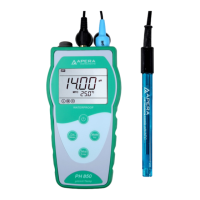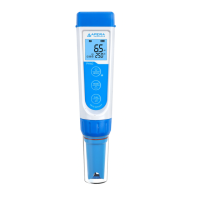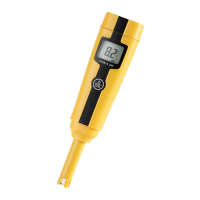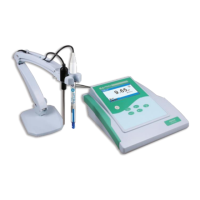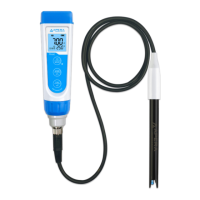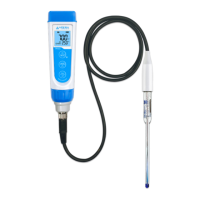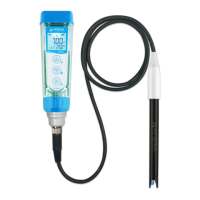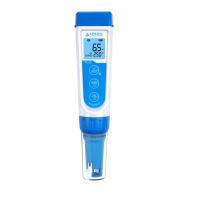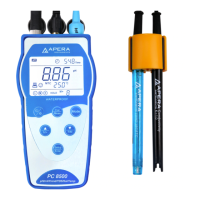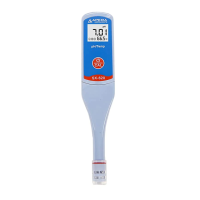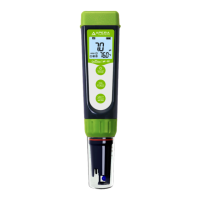13
Enter in pre-set due calibration date
reminder
Press key to perform calibration or cancel due
calibration setup per parameter P1.4
4.5.3. pH temperature principle
Please note that the closer the temperature of the sample solution is to the calibration solution, the more
accurate will be the readings.
4.5.4. Factory default setting
For factory default setting, please refer to parameter P1.6 (Section 7.3). all calibration data is deleted and
the meter restores to the theory value (zero electric potential of pH is 7.00, the slope is 100%). Some
functions restore to the original value (refer to Appendix-I). When calibration or measurement fails, please
restore the meter to factory default setting and then perform re-calibration or measurement. Please note
once set the factory default, all the data deleted will irretrievable.
4.6 pH Electrode Maintenance
4.6.1. Daily maintenance
The soaking solution contained in the supplied protective bottle is used to maintain activation in the glass
bulb and junction. Loosen the capsule, remove the electrode and rinse in distilled or deionized water
before taking a measurement. Insert the electrode and tighten the capsule after measurements to prevent
the solution from leaking. If the soaking solution is turbid or moldy, replace the solution. The
soaking/storage solution is 3M KCL (SKU: AI1107). Using other brand’s storage solution might cause
potential damage to the electrode.
The electrode should not be stored in distilled or deionized water, protein solution or acid fluoride solution.
In addition, do not soak the electrode in organic silicon lipids. For best accuracy, always keep the meter
clean and dry, especially the meter’s electrode socket. Clean with medical cotton and alcohol if necessary.
4.6.2. Calibration buffer solution
For calibration accuracy, the pH of the standard buffer solution must be reliable. The buffer solution should
be refreshed often, especially after heavy use.
4.6.3. Protect glass bulb
The sensitive glass bulb at the front of the combination electrode should not come in contact with hard
surfaces. Scratches or cracks on the electrode will cause inaccurate readings. Before and after each
measurement, wash the electrode with distilled or deionized water and then throw off the excess water on
the electrode. Do not clean the glass bulb with a tissue for it will affect the stability of the electrode
potential and increase the response time. The electrode should be thoroughly cleaned if a sample sticks to
the electrode. Use a solvent if the solution does not appear clean after washing.
4.6.4. Renew glass bulb
Electrodes that have been used over a long period of time, will become aged. Submerge the electrode in
0.1 mol/L hydrochloric acid for 24 hours, then wash the electrode in distilled or deionized water, then
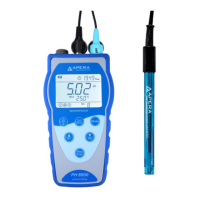
